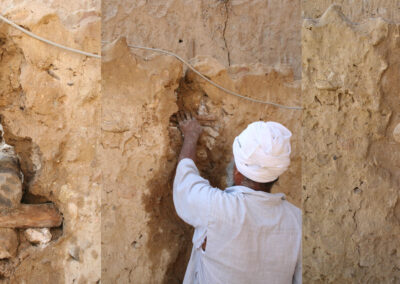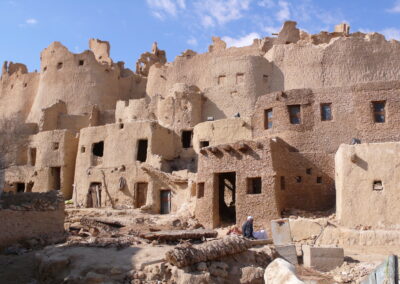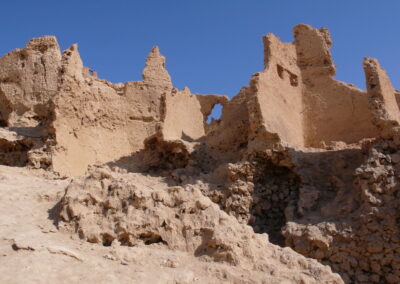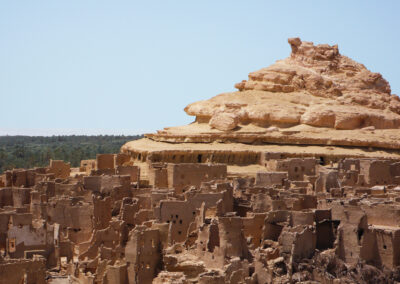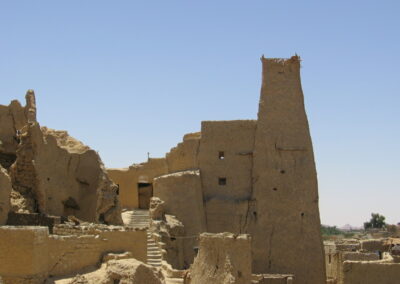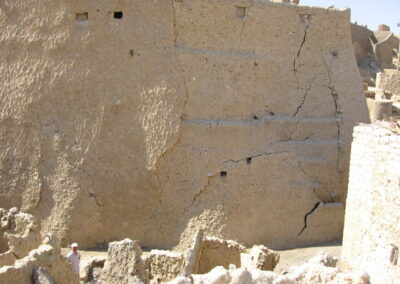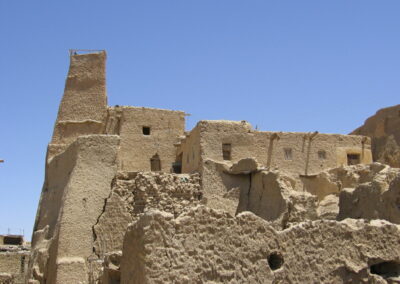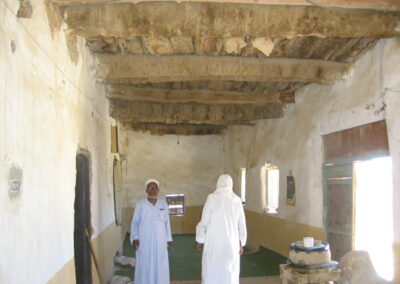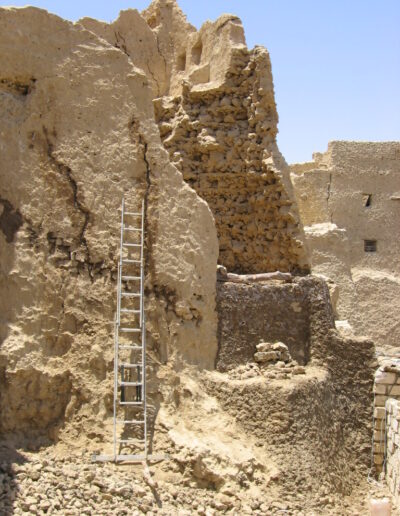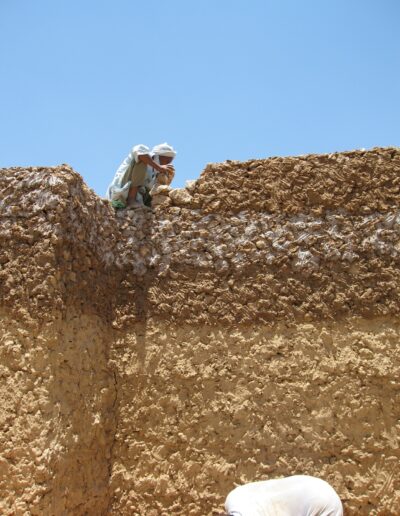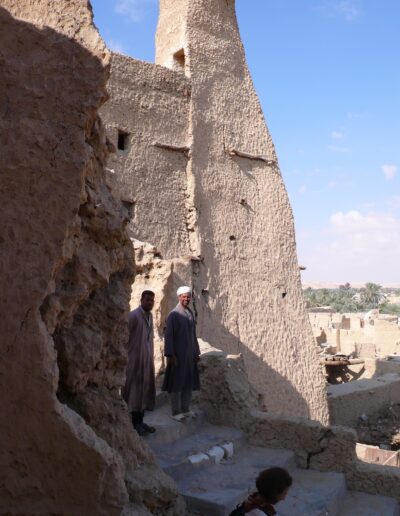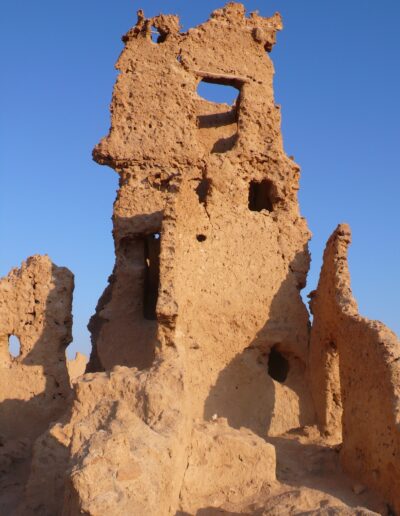Preservation and enhancement of cultural heritage and development of ecotourism activities in Siwa Oasis – Marsa Matruh Governorate
The Associazione Giovanni Secco Suardo participated in the project, coordinated by the NGO RC of Rome, as an associated partner, dealing specifically with the protection and enhancement of the architectural heritage.
The Siwa oasis is located in the heart of the Egyptian “Western Desert” and lies in a depression whose soil is on average 18 meters below sea level. Located on a commercial route that has been used since ancient times, the oasis bears witness to the passage of important merchant caravans and the establishment of an important architectural school. Notable evidence of this remains, such as the temples of Ammon and the tombs of Jabal al-Matwa, the oldest tombs dating back to the 26th dynasty and the Ptolemaic era. Of the subsequent architectural production remain some important monuments and the villages of the old city of Siwa (Shali). The medieval city of Siwa, which takes the name of Shali, which in the Siwan language means “The City”, was founded in 1203 AD. by forty inhabitants of what, at the time, was the main city of the oasis, Aghurmi. The founders of the city built their residences within a powerful wall and over the centuries the population increase created considerable housing problems. Since the population of the city was prevented from building their own houses outside the walls, floors upon floors were added to the original houses built with the typical karsheef technique, which uses ashlars of blocks of salt bound by a mixture of mud taken from precise areas of the oasis. Once dry, this material reaches a compact and hard consistency, close to that of cement; in this way, some of the houses reached the remarkable height of seven or eight floors. Over the centuries there has been a progressive loss of the building tradition, already verifiable in the more recent buildings.
Currently the reason why traditional houses are in a state of abandonment is above all linked to reasons of status symbols: the push towards modernity and the increased monetary value of the buildings in Siwa, which has become a fashionable place, is causing the abandonment of buildings originals towards a new building development.
The project, approved by the Ministry of Foreign Affairs, launched a policy of conservation and restoration of historic buildings and the local building tradition, through a series of interventions aimed at raising awareness, technical training and institutional support for municipalities and other local authorities in the identification and implementation of protection policies and through the opening of a pilot site in the ancient fortress of Shali.
The project, starting from the study of techniques and materials to arrive at the consolidation of a portion of the walls of the ancient fortress, has provided the tools that can allow the authorities and the local population to proceed with the restoration of homes in Karsheef using construction techniques traditional and local materials.
Promoter:
Associazione Giovanni Secco Suardo
Ricerca e Cooperazione
Participating organizations and supporters:
Direzione Generale alla Cooperazione e allo Sviluppo – Ministero Affari Esteri – Associazione Giovanni Secco Suardo – COSPE Cooperazione per lo Sviluppo dei Paesi Emergenti – Università di Firenze, Dipartimento di Costruzione – ICVB Istituto per la Conservazione e la Valorizzazione dei Beni Culturali del CNR Consiglio Nazionale delle Ricerche – Governorate of Marsa Matrouh, People’s – Council of the Siwa Oasis,and People’s Council of the Siwa City – Department of Antiquities – Ricerca e Cooperazione – Siwa Community – Development and Environment Conservation (SCDEC) – Siwa Tourism Office – The Siwa House – Egyptian Environment Affair Agency (EEAA)

